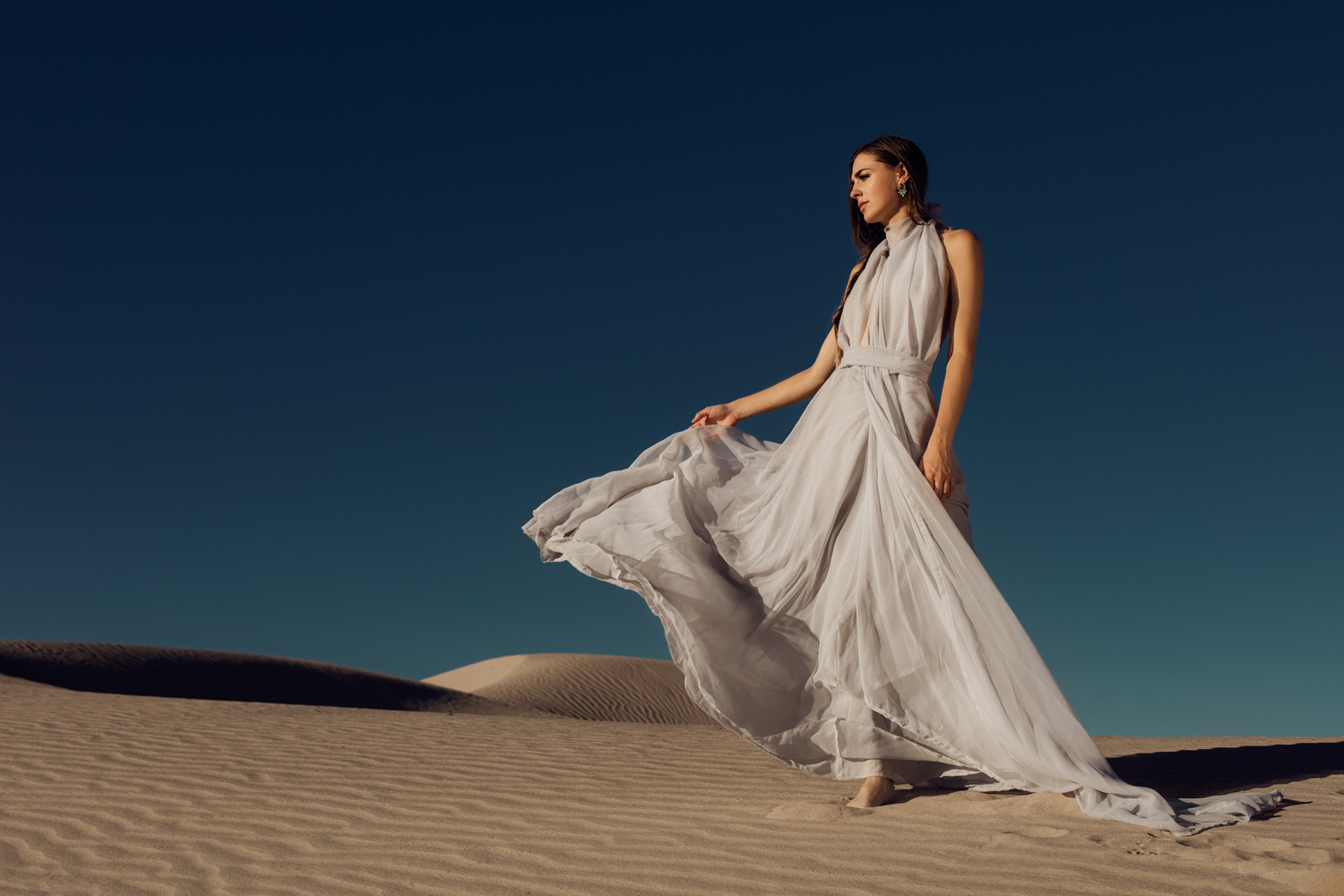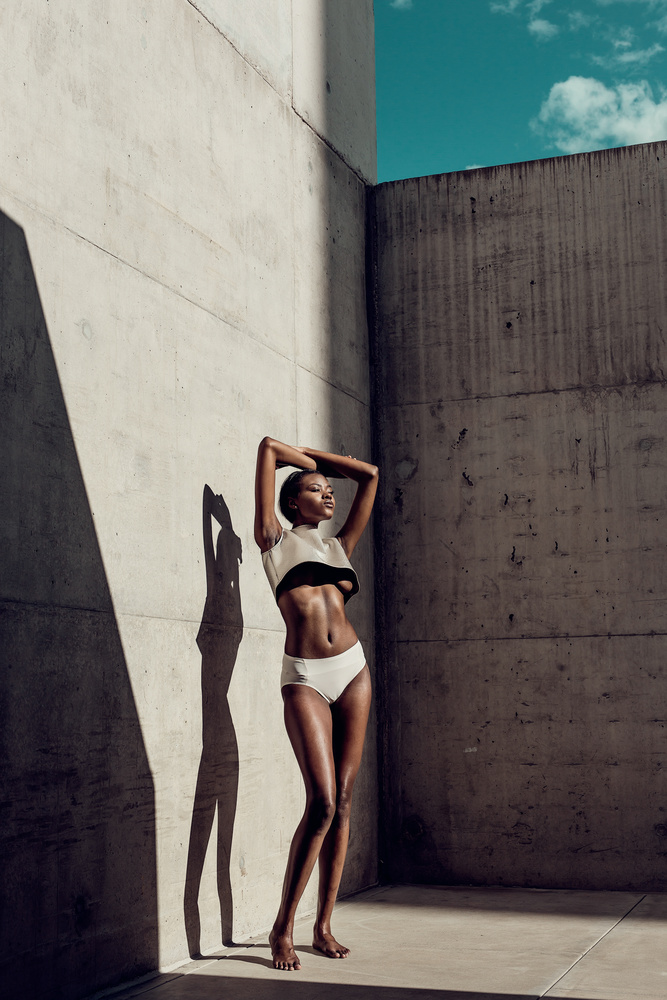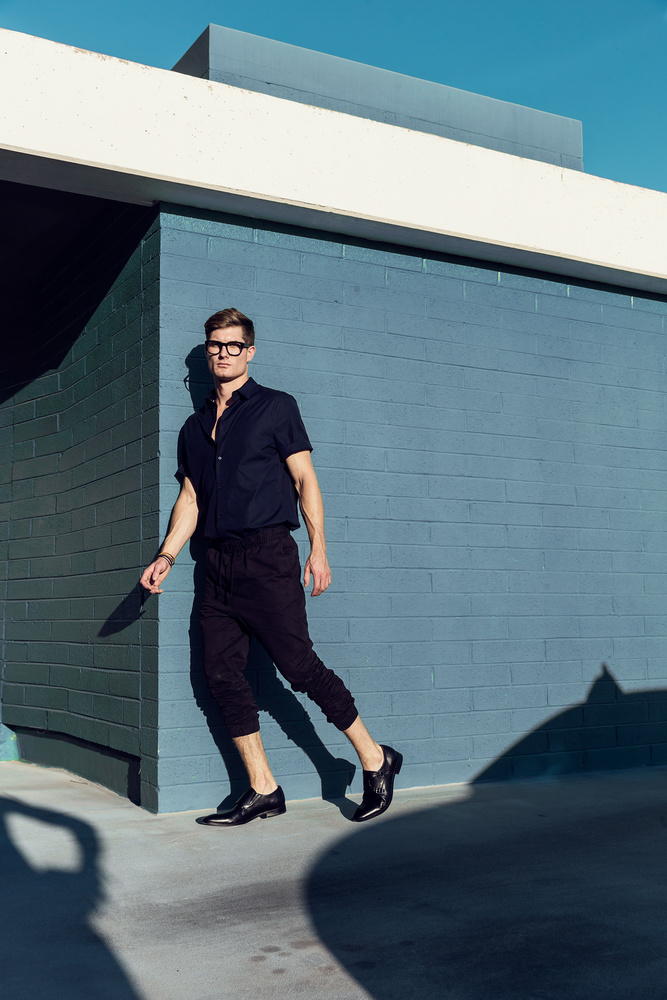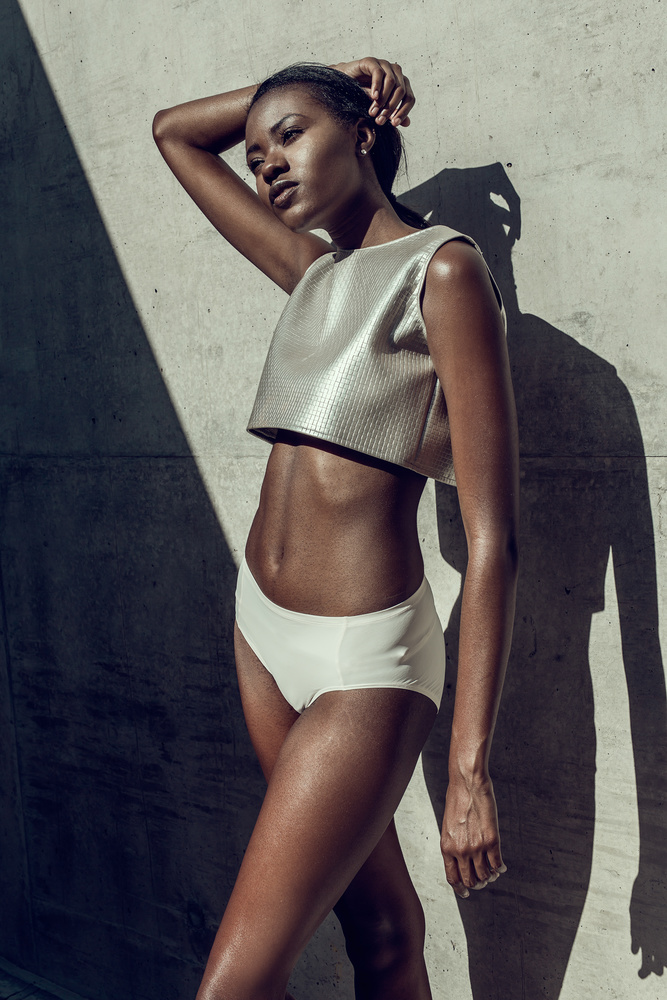It seems that a lot of photographers tend to avoid direct sunlight and for a long time, I did too. Occasionally, I would backlight subjects, but I would never dare light them directly with the sun. I decided one day that it was time to embrace the sun. In this article, I break down my methods for achieving a good photograph in direct sunlight, discussing what has helped me and what you should avoid.
Embrace the Sun
When I first started shooting portraits, I hated direct sunlight. I would look for any small piece of shade I could find. Eventually, I started using strobes on my subjects if I wanted the shot to be more dynamic. I still shoot in the shade and use strobes often, but I decided I needed to use the sun to my advantage. Yes, using the harsh sun is not for everyone or for every subject matter. But in the appropriate setting, it can be the best way to light your subject. Living in Phoenix means a lot of days with no clouds and very bright sunlight. As a result, I have started to shoot more in direct sunlight when it comes to fashion. I love the sharp contrast the light gives my subjects and the shapes and shadows the sun provides are unmatched by other lighting methods.

Be Creative
The shot below was taken on a children's playground and the shadows are from a rope-climbing wall. It was shot around 9 a.m. on a very bright day. Find cool shadows or shapes that can complement your subject. It can sometimes be hard to mimic the awesome patterns the sun produces with strobes; so, take advantage of the sun. You have all day; get out there and find areas you might overlook because you're looking for shade. Create a composition that draws people in. Since we are bombarded with photos everyday, try to produce something that will make people stop for a second to not only admire the shot, but also wonder how it was created.

Solid Simple Backgrounds
I have found that when shooting with the sun's harsh light, it looks best to have solid and consistent backgrounds. I commonly see photographers shoot in harsh sunlight with a chaos of a background, usually involving trees, grass, or just too many distractions. This is usually a recipe for a cheesy-looking photo. I survey my surroundings and look for big solid areas where the light is consistent and even. I try to have as little as possible in my compositions. By eliminating the distractions, you can build stronger images.

Use It to Broad-Light
When I started to shoot more in direct sunlight, I would backlight the subject. I then moved to side-lighting them, but was often unhappy with the results. I now almost always face them directly into the sun. I have found that for my style, using the sun to broad-light my subject looks best. When the sun would light the subject from the side or slightly behind, the light on their face would look awful and the backgrounds often more chaotic. When using the sun, the exposure difference is usually too drastic for anything other than broad lighting (unless you you a reflector or strobe for a fill). You want to have enough detail in your shadows.
There are some common problems to look out for when shooting in the sun:
- Models have a harder time keeping their eyes open (this is especially true when using a reflector). I have found the "counting down from three method" works best for me: count down from three, and on one, the model opens their eyes).
- Another thing to look out for is raccoon eyes. Raccoon eyes happen when the sun is too high; if this is the case, try having your model pose with their face in more upward-facing positions.
- One downfall to harsh lighting is not all models will look good with it. Models with rough skin may also cause problems when it comes to retouching. I recommend learning a few basic retouching skills to help elevate your photos. Lighting is tricky; you usually want it to look simple or natural, but also intentional.

Let the Sun Shape Your Backgrounds
One of my favorite parts about shooting in direct sunlight is capturing the beautiful shapes the sun creates on my backgrounds. When shooting in the shade, it can be hard to create abstract shapes or dimension without light and shadows. Even when using strobes, this can be hard, unless you own multiple strobes. I try to find a backdrop that not only complements my subject, but also has some sort of unique shape or shadow. Keep in mind that a location will look very different throughout the day; some locations can change drastically in 30 minutes. If you live in a city, there are plenty of structures that provide interesting shapes. It's still possible when shooting in nature, but you may have to work a bit harder to find clean backgrounds.

Color
Color plays a huge role for me when shooting in direct sunlight. The way the sun illuminates clothes is really beautiful and should be thought of when selecting clothing for your shoot. Colors become much more saturated in the sun than in the shade. I like to have simple color palettes. I try to have my subject either complement or match my background. Having backgrounds with few colors is important to me. Having too many colors will usually distract from your subject. I also don't usually prefer the subject to be wearing too many different colors, unless there is a purpose. This is why it is nice to work with stylists. The colors within the shot will also affect how I tone the image.

In Conclusion
- Get out there and go shoot.
- Be creative and explore locations.
- Create shapes with light and broad-light your subject.
- Have clean backgrounds and have your colors coordinate throughout your photo.
My purpose is not to put down other lighting methods; it's simply to encourage those who avoid the sun to give it a shot (pun intended). I am a big strobist, but I am glad I decided to use the sun to my benefit. I would love for people to share their examples after reading this. In my next article, I will be talking about how to master the sun with a reflector.











Always great stuff, Thomas!
Thank you Derek
No flash settings or suggestions? Filter types and densities? Anything of use to recreate the sample photos you posted? I can go out, shoot and guess, but i promise it'll look nothing like these. :/
they look like theyve been shot without flash and filters. Shoot and expose for the highlights. Obv some skin smoothing, color grading and most likely cloning out of disturbing elements has been done.
Bingo
Hi Jay, All of these shots were done with just a camera and a lens, no lights or filters. You can go out there and get images like these with just a camera and some editing in photoshop.
Good article, Thanks. I too live in AZ, but further north. As you said, there are a lot of sunny days here. You gave me some background ideas that I want to try.
Have Fun,
Jeff
Thank you Jeff, I'm glad you were inspired to go try something.
Great Shots
Thank you Chris.
I LOVE shooting in harsh sun and overpowering it! It gives me the ability to shoot any time and place and not restrict myself to golden hour.
It sure does, you can shoot at any time. I like that middle shot! Keep shooting.
Great advice followed by equally great shots.
Thank you Roshan, means a lot.
Great article.
Thank you Robert.
great tips! Thank you!
Thank you Sergio
Nice article dude, great images as well!
Thanks my fellow AZ dude
Good article Thomas - thank you. Would love to work with the sun, but here in the UK it is a rare thing- and never a light source one can rely on. Btw - the great Herb Ritts used the sun to great effect- for those who want to study its use further.
Thank you, I'll have to check him out.
Dude, because cancer.
But you get a good tan
Thanks for the great article! Do you have any tips on metering? I'm sure it varies with skin tones, etc. but for example, do you underexpose the photo?
I tend to very slightly under expose the skin, just a little, then with retouching bring it to what you see for the final images.
Awesome stuff. Makeup?
A good makeup artist will always make your job easier in post.
I too live and shoot in AZ, and often deal with harsh lighting conditions. I've gotta mention that filters are vital if you're planning on using strobes or off camera flash... or want any depth of field... or don't spend hours in photoshop.
I don't use any filter, but to each their own.
Great article!
Thank you
Howd you get the second photo to have such a dark sky? That has to be strobe or photoshop...
Photoshop. Under the HSL slider if you select luminance you can make the blues of the sky go pretty dark.
Great topic! As a mostly location photographer I found it interesting. And amazing images to back it up! Thanks.
Thank you Jack
I used to fear direct sunlight too, one day I forced myself to use it and now I love shooting with it
Great shot
This article stands above the average fstoppers content -- great work and very helpful advice!
Thank you Justin. I'm glad to hear that.
Great article first at all!
I'm just getting slowly getting into people photography in generall.
So how do you get the skin tones so smooth tho the sun is quite a hard light source?
Do you underexpose it and smooth it out in post?
Love this article ... great stuff for AZ
Great article.. I live in Dubai and had a similar problem...trying to avoid direct sun...always had to have an assistant who would kindly hold a reflector at 50C heat... Than one day I didn't have one and forced to use direct sunlight I realized I love the light sun produces in photos that way..and moreover..i can now shoot anytime, without having to rely on an assistant availability..